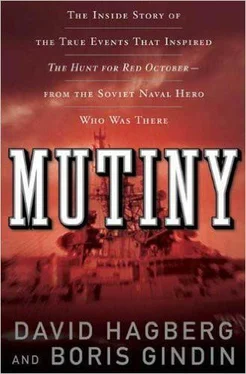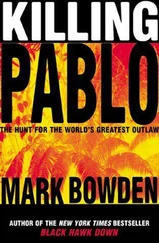Unbowed, Sakharov founded the Moscow Human Rights Committee, and the KGB began tailing his friends, opening his mail, and monitoring his phone calls.
He married Yelena Bonner, who was another human rights activist, and the KGB began spreading vicious rumors about him, trying to drag down his moral character in the public eye.
In 1975 he was awarded the Nobel Prize for Peace, but the KGB revoked his external passport, and his wife had to go to Stockholm to read his acceptance speech.
By 1980, the KGB struck back even harder. Sakharov couldn’t be shot or even jailed; he was simply too important a figure in Russia as well as in the rest of the world. They did the next best thing by exiling him to the closed city of Gorki, now called Nizhniy Novgorod, out in the boondocks three hundred miles east of Moscow. While he was there, the KGB continually harassed him, following him, listening to his phone calls, reading his mail, and even breaking into his apartment and stealing manuscripts he’d written. Sakharov wrote:
The Deputy Procurator of Gorky explained the terms of the regimen decreed for me: Overt surveillance, prohibition against leaving the city limits, prohibition against meeting with foreigners and criminal elements, prohibition against correspondence and telephone conversations with foreigners including scientific and purely personal communications, even with my children and grandchildren.
It wasn’t until 1986, with Gorbachev’s policies of perestroika and glasnost, that Sakharov was finally allowed to return to Moscow for the last three years of his life.
That was still in the distant future for the officers and crew aboard the Storozhevoy getting ready to get under way this crisp early November evening. But if the Soviet Union’s most influential and famous citizen zen couldn’t stand up to the KGB, how could Sablin and his mutineers expect to do any better?
Just about every modern nation has its variety of secret service, but none of those organizations, not the CIA, not Britain’s MI6, not even the Nazi’s Gestapo, ever came even close to the all-encompassing power of the Soviet Union’s Committee for State Security, the Komitet Gosudarstvennoy Besopasnosti.
The KGB was into just about everything, with roughly the same powers and responsibilities as the U.S. Central Intelligence Agency, the Federal Bureau of Investigation’s Counterintelligence Division, the Federal Protective Service, the Secret Service, and the Border Patrol and Coast Guard.
Besides spying on other countries, conducting sabotage and assassinations, the KGB regulated all thought, behavior, and speech in the Soviet Union. It controlled the arts, religion, education, the sciences, the news media, the police, and, in some ways most important, the military. Every unit and ship, including the Storozhevoy, had its KGB snitch embedded. On this evening Captain Lieutenant Aleksey Bykov, the KGB representative aboard the Storozhevoy, was gone. He’d been transferred to another ship, and his replacement wasn’t due aboard until after the refit at the shipyard.
The KGB kept track of the ethnic minorities across all of Russia and her republics, it stopped its citizens from skipping over the border to freedom, it kept a constant surveillance of troublemakers, such as Sakharov, and it made sure that every man, woman, and child in the country worked for the Rodina and for nothing else. No person, no thought, no ideal, was more important than the Motherland.
The KGB conducted its own arrests, its own interrogations, very often involving brutal torture: electric prods to the genitals, bamboo shoots under the fingernails, toenails ripped out with pliers, skin flayed off in long strips, hot branding irons under the armpits and in the groin, dentist drills without anesthetic, cold water hoses up the anus, not to mention various forms of psychological torture, including the use of a wide variety of drugs, including hallucinogens.
And the KGB conducted its own trials, usually in secret, the outcomes of which were never in doubt. After all, if the KGB had reason to believe you were guilty of a crime against the Soviet people, you must be guilty.
Lenin himself wrote that the “scientific concept of dictatorship means nothing more or less than unlimited power resting directly on force… not limited by anything… nor restrained by any laws or any absolute rules.”
Nothing had changed between the October Revolution of 1917 and the cold November night of 1975, except that the KGB, which had been christened the Cheka under its first chief, the sadist Felix Dzerzhinsky, was more efficient and scientifically brutal than ever.
One of the primary missions of the KGB was the suppression of dissidents and dissent, what was officially termed unorthodox beliefs, which included keeping things quiet. KGB chief Yuri Andropov, who would later become president of the Soviet Union, made it his prime mission to make sure every Soviet citizen toed the Party line: “…every example of dissent is a threat to the Soviet State… and must be challenged and… all the resources of the KGB must be mobilized to achieve this goal.”
Andropov even set up a separate organization within the KGB— the Fifth Directorate—to look out for and put down dissent anywhere and everywhere, including inside the military. The KGB was serious, and it was into this buzz saw that Sablin was leading the officers and crew of the Storozhevoy.
Among the more successful methods of dealing with dissidents and so-called threats against the Rodina was the Serbsky Institute of Forensic Psychiatry in Moscow. Behind tall stone walls and iron gates, guarded by armed KGB troops, a KGB colonel and doctor of psychiatry, Daniil Lunts, was in charge of what was called Diagnostic Department I, where Soviet citizens who had been arrested for political noncomformity were locked up for treatment. By definition, enemies of the Rodina were insane and therefore had either to be executed before their insanity could infect the entire nation or be treated with drugs, psychoanalysis, or, in the most extreme cases, prefrontal lobotomies.
Sometimes more conventional treatments seemed to work best. In 1969 Army Major General Peter Grigorenko publicly called for the withdrawal of Soviet troops from Czechoslovakia. He had been awarded the Order of Lenin, the Order of the Red Star, the Order of the Patriotic War, and two Orders of the Red Banner, his nation’s highest honors, yet he was arrested for unorthodox beliefs.
Colonel Lunts determined that the general was suffering from paranoid schizophrenia and immediately transferred him to the mental hospital/prison at Chernyakhovsk for immobilization treatments. The patient was tightly wrapped in wet canvas, head-to-toe. As the canvas dried it began to shrink. Slowly. The pain was said to be excruciating. Most patients, when asked, promised that they were cured and no further treatments would be necessary.
The KGB was very good at what it did.
Nobody was safe, not famous scientists, not decorated war heroes, and certainly not Catholic priests. In 1971 the KGB accused a Lithuanian priest, Father Juozas Zdebskis, of teaching the catechism to children in his parish. In the eyes of the state this was a crime of political noncomformity, because no idea or ideal higher than the religion of the Motherland could be taught.
The priest’s trial was supposed to be a secret, but the word got out and more than five hundred people, most of them carrying flowers, showed up to hear the testimony of several children who told the court that Father Zdebskis taught them that they should never steal or break windows.
KGB thugs scattered the crowd, breaking ribs and arms and bloodying some noses. But enough people were there to see a battered priest being led out of the courthouse to serve a one-year sentence at what was called a corrective labor camp.
Читать дальше












